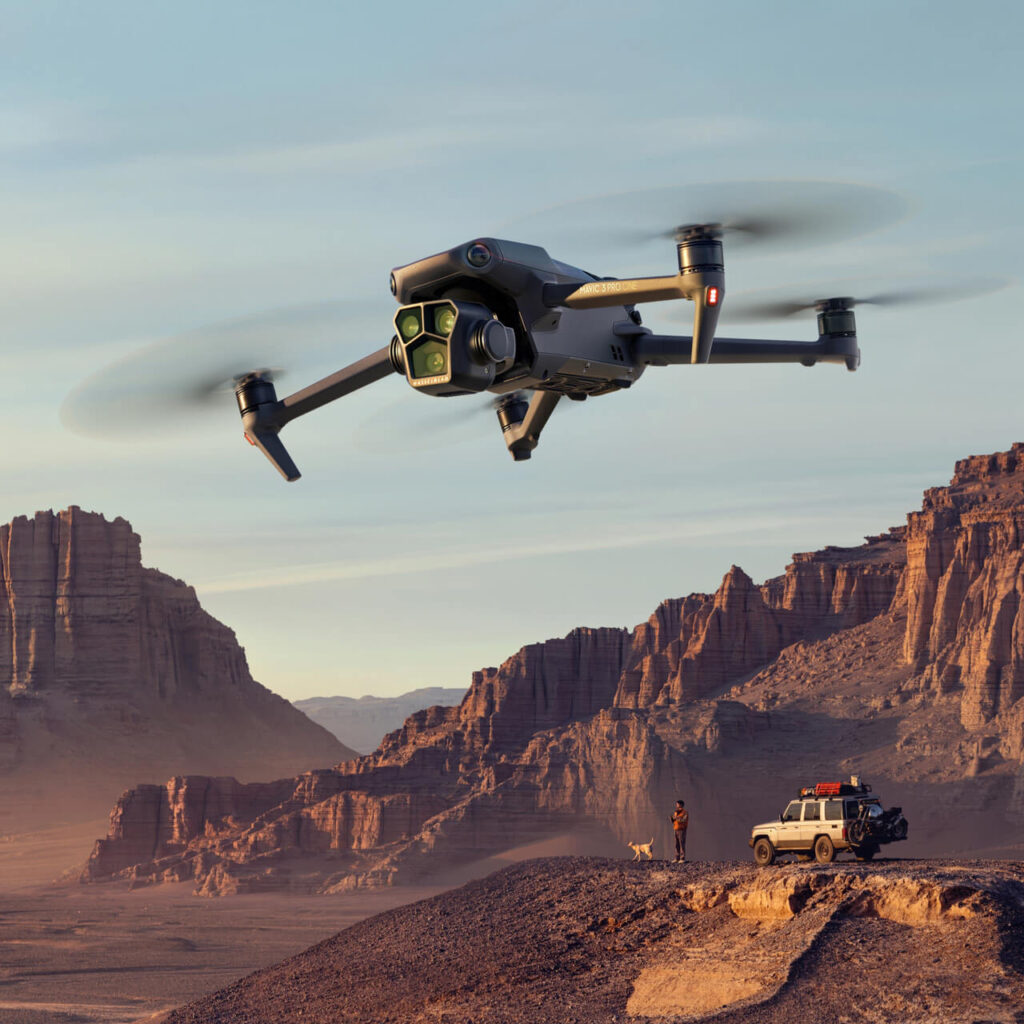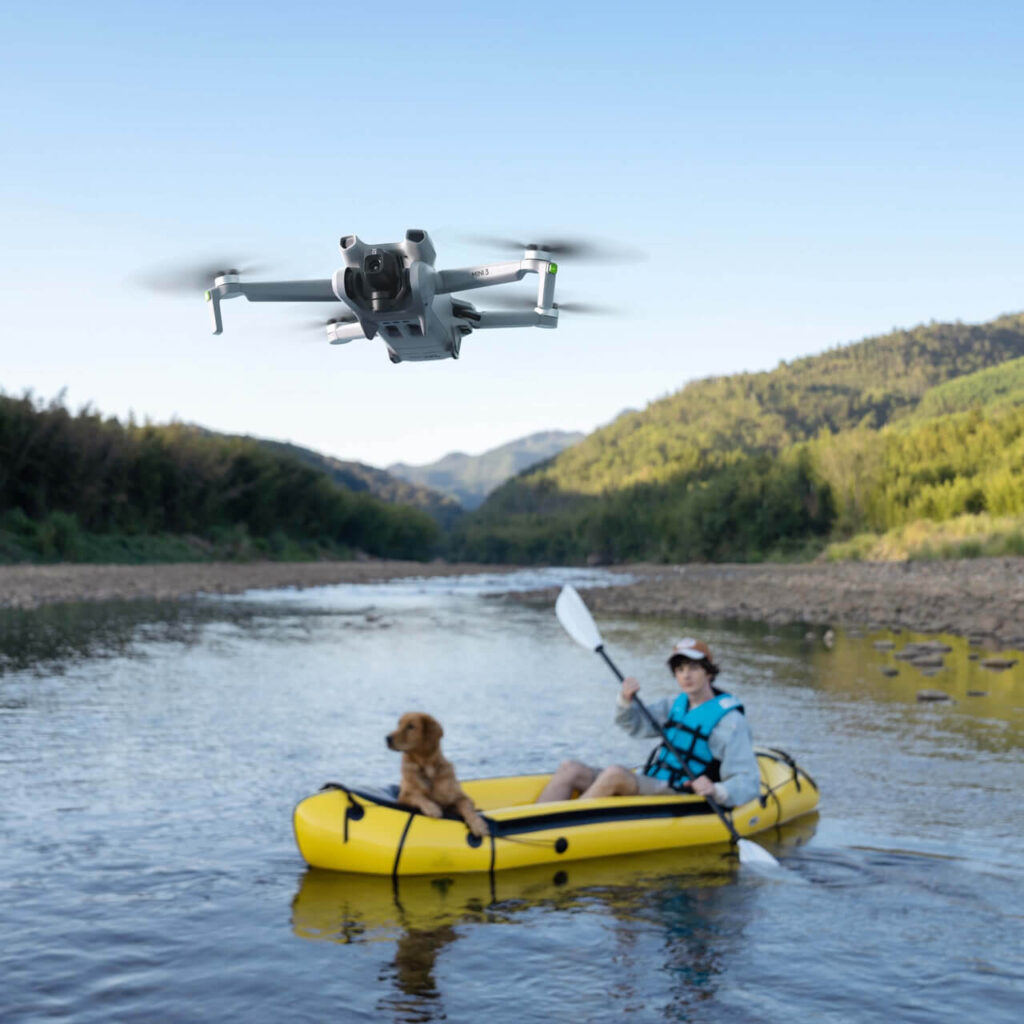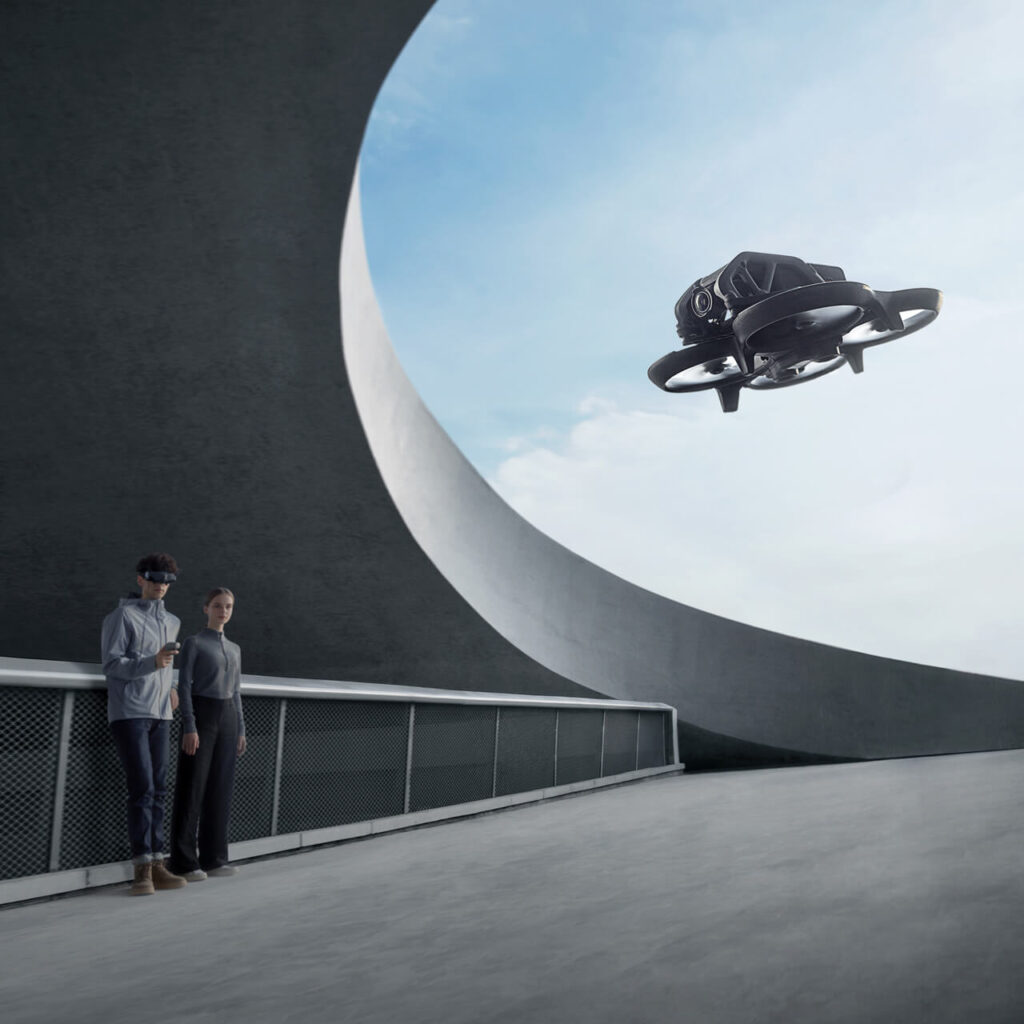When choosing a drone, one of the first things buyers look for is smooth and stable flying. Whether you are filming travel vlogs, creating cinematic footage, or simply learning the ropes, stability can make or break your experience. That’s where two of DJI’s latest models often get compared: the DJI Neo and the DJI Avata 2.
At first glance, both seem capable of delivering a reliable flight, but they’re built for different kinds of pilots. The DJI Neo is designed as a lightweight, beginner-friendly drone that balances portability with easy handling. The DJI Avata 2, on the other hand, belongs to the FPV (First Person View) category, offering immersive flying that feels dynamic and action-packed.
So, the question is, can the DJI Neo truly match the DJI Avata 2 when it comes to smooth flying and stable footage? In this blog, we’ll compare their flight performance, stabilization systems, and real-world handling to help you decide which one fits your needs.
If you’re planning to buy your next drone in India, Jetayu Gadgets offers both the DJI Neo and DJI Avata 2, along with other leading models from DJI, Autel, Parrot, Skydio, Ideaforge, and more. Let’s dive in and see how these two popular drones perform head-to-head.
Key Specs That Impact Flight Smoothness
When comparing the DJI Neo and the DJI Avata 2, the first step is to look at the specifications that directly influence flight stability. While flashy camera specs or smart features often dominate marketing, it’s actually the stabilizers, sensors, and flight design that determine how smooth your footage will look.
Here’s a quick comparison of the most important stability-related specs:
| Feature | DJI Neo | DJI Avata 2 |
|---|---|---|
| Gimbal System | 3-axis mechanical gimbal | Single-axis gimbal + advanced electronic stabilization |
| Weight | Lightweight (easy to carry, but more wind-sensitive) | Heavier, more grounded in windy conditions |
| Obstacle Avoidance | Basic forward sensors | Advanced sensors for FPV maneuvers |
| Flight Modes | Beginner-friendly stability modes | FPV-focused with Sport and Manual options |
| Camera Stabilization | Smooth cinematic shots at low speed | Dynamic stabilization for fast, agile moves |
The DJI Neo is designed to give beginners confidence, with its lighter frame and simple stabilization system that works well for vloggers and casual flyers. The DJI Avata 2, meanwhile, is an FPV drone, so its strength lies in balancing fast movements with stabilization algorithms that keep footage immersive without losing control.
This difference is similar to what we’ve seen in other DJI comparisons. For example, in our blog on DJI Mini 3 vs Mini 4 Pro, we highlighted how small changes in gimbal design and weight can completely change how smooth footage feels in real-world conditions. Likewise, if you’ve ever wondered “What Is the DJI Fly More Combo? Is It Worth It in 2025?”, you’ll know that having extra batteries often matters just as much as flight specs because smoother shots sometimes need multiple takes.
So before we get into real-world performance, these technical factors already show why the Neo and Avata 2 are built for slightly different flying experiences.
Real-World Flight Experience
Specs only tell part of the story. To really answer whether the DJI Neo can match the DJI Avata 2 in smooth flying, we need to look at how they behave in actual conditions.
DJI Neo in Practice
The Neo is designed for simplicity. Indoors, it hovers with impressive accuracy thanks to its vision positioning sensors. Outdoors, in calm weather, it delivers smooth cinematic shots that are perfect for casual vloggers or first-time flyers. However, because it is lightweight, it tends to feel less stable in windy conditions. That said, for everyday travel and lifestyle content, it gives you exactly the kind of smooth footage you’d expect from a beginner-friendly drone.
This is why many creators starting out often choose the Neo over heavier FPV models. If your goal is simple travel vlogs or documenting personal adventures, the Neo is enough to capture those moments without overwhelming controls. Our earlier blog on “Vlogging Your Solo Adventure? Here’s What Only a Drone Can Film” explains why lightweight drones with smooth hovering are often the easiest choice for solo travelers.
DJI Avata 2 in Practice
The Avata 2 shines in a different way. It’s built for FPV, which means the flying experience is immersive and dynamic. The drone stays remarkably stable even during high-speed maneuvers, barrel rolls, or sudden dives, because of its advanced stabilization system combined with DJI’s software tuning. For creators who love capturing action scenes—mountain biking, surfing, or city fly-throughs the Avata 2 provides that adrenaline-packed yet smooth footage that traditional drones struggle to replicate.
FPV drones can be intimidating for first-timers, but DJI’s safety features make it much easier to learn. If you’ve ever worried about crashing while learning, you might find our post “Worried About Crashing Your First Drone? Here’s Why DJI’s Safety Features Have Your Back” useful. It highlights how DJI builds smart safety layers into drones like the Avata 2, allowing you to push limits without always fearing a crash.
Verdict on Flight Experience
- Neo: Best for casual users, vloggers, and those who prioritize simplicity and lightweight travel.
- Avata 2: Best for creators who want immersive FPV action, stability at speed, and more cinematic control.
Both drones deliver smooth flying, but the definition of “smooth” changes depending on whether you want calm, cinematic hovering or fast, immersive FPV motion.
Stability Technologies in Each Model
Smooth flying doesn’t happen by chance. It’s a combination of hardware design, stabilization software, and intelligent flight controls. Both the DJI Neo and DJI Avata 2 use different approaches to achieve stability, and that’s where their true differences stand out.
DJI Neo’s Stability Setup
The Neo is equipped with a 3-axis mechanical gimbal, which is one of the most reliable systems for keeping footage level and shake-free. This hardware is supported by DJI’s intelligent flight modes, which automatically correct small movements, especially useful for beginners. In low wind and moderate outdoor conditions, this combination produces smooth, cinematic footage.
Another plus is the Neo’s beginner-friendly flight algorithms. It prioritizes steady hovering and smooth forward motion over speed or agility. That makes it easier for first-time drone buyers to feel confident right away. In fact, as we mentioned in our guide “Buying a Drone for the First Time? The DJI Mini 4 Pro Makes It Easy to Fall in Love with Flying”, DJI has a history of building stable drones that let new users focus on creativity instead of constantly correcting their flight path.
DJI Avata 2’s Stability Setup
The Avata 2 takes a very different path. Instead of relying purely on a mechanical gimbal, it uses a single-axis gimbal combined with advanced RockSteady and HorizonSteady electronic stabilization. This hybrid system is designed to support high-speed FPV movements while still keeping footage smooth and viewable.
Its heavier build also helps. A bit of extra weight means the Avata 2 is less likely to drift in windy conditions compared to the lighter Neo. Add to that 360° obstacle detection and advanced GPS positioning, and the Avata 2 maintains smoothness even when flying aggressively through complex environments.
For pilots who want to push the limits of FPV without sacrificing stability, the Avata 2 stands out. If you’ve ever wondered how stability differs between FPV and regular drones, our piece on “Which DJI FPV Drone Is Right for You? Top 5 Models in India Compared” gives a broader view of how FPV stabilization tech has evolved.
Key Takeaway
- Neo: Traditional 3-axis gimbal, ideal for calm, cinematic stability.
- Avata 2: Hybrid stabilization built for high-speed FPV smoothness.
Both deliver “smooth flying,” but in very different styles—Neo for simple cinematic hovering and Avata 2 for dynamic, action-heavy control.
Use Cases and Who It’s Best For
Choosing between the DJI Neo and DJI Avata 2 really comes down to what you want to do with your drone. Both are capable of smooth flying, but they serve very different audiences.
DJI Neo: Made for Beginners and Everyday Creators
The DJI Neo is lightweight, portable, and simple to use. Its biggest advantage is that you don’t need to be an expert pilot to capture smooth footage. That makes it perfect for:
- First-time flyers who want a stress-free entry into drones.
- Travel vloggers who need a small, stable drone to pack on solo trips.
- Casual content creators on Instagram or YouTube who want steady aerial shots without advanced FPV skills.
For these users, stability means easy hovering, smooth forward motion, and consistent footage in calm conditions. If you’re just starting your creative journey, our blog “Is Buying a Drone Enough to Start My Journey as a Content Creator?” explains why an accessible drone like the Neo can be the right first step before moving into advanced models.
DJI Avata 2: Designed for FPV Enthusiasts and Action Creators
The Avata 2 is in a different league. It’s best for pilots who want immersive flying and smooth footage even at high speeds. Its stability is engineered for FPV maneuvers, so it’s ideal for:
- Adrenaline-seeking creators filming action sports like biking, skating, or surfing.
- Cinematic storytellers who need dynamic, sweeping shots that go beyond a standard hover.
- Experienced hobbyists ready to move from basic drones into FPV flying.
This type of flying isn’t just about hovering steadily, but about staying smooth during fast flips, dives, and rolls. If that’s the kind of content you want to create, the Avata 2 makes a much better fit. For context, check out “Best Drones for YouTubers in 2025: Top Picks for Vlogging, Travel & Cinematic Shots”, where we show how different drone categories suit different creative needs.
Quick Breakdown

Pros and Cons: Stability-wise
No drone is perfect, and when it comes to smooth flying, both the DJI Neo and DJI Avata 2 have strengths and trade-offs. Knowing these helps buyers set the right expectations.
DJI Neo – Pros and Cons
Pros
- 3-axis gimbal ensures steady, cinematic shots.
- Lightweight and portable, easy to carry while traveling.
- Beginner-friendly flight modes for stable hovering.
- Less intimidating learning curve than FPV drones.
Cons
- More sensitive to wind because of lighter build.
- Limited stabilization at higher speeds.
- Not suited for action-heavy FPV maneuvers.
This is why the Neo appeals strongly to first-time drone buyers. In our blog “Bought a Drone Recently? Here’s How to Verify If It’s Not Refurbished”, we explained how many new pilots look for reliability above all else, and the Neo delivers exactly that in its stability.
DJI Avata 2 – Pros and Cons
Pros
- Hybrid stabilization system handles fast FPV moves smoothly.
- Heavier design offers better balance in windy conditions.
- Perfect for immersive, dynamic filming styles.
- Advanced safety features reduce crash risk.
Cons
- Single-axis gimbal not as smooth for hovering shots.
- Steeper learning curve for new pilots.
- Bulkier compared to ultra-light beginner drones.
For creators who want cinematic FPV shots, these trade-offs are worth it. And with the rise of content creators choosing drones as a career tool, as we discussed in “Is Drone Flying a Good Career in India? Future Scope & Tools You’ll Need to Begin”, the Avata 2 fits right into that professional path.
Quick Stability Verdict
- Neo: Best stability for slow, controlled cinematic flights.
- Avata 2: Best stability during high-speed FPV action.
Buying Tips: Maximizing Flight Smoothness
Even the most stable drone can deliver uneven footage if it isn’t set up properly. Whether you choose the DJI Neo or DJI Avata 2, paying attention to a few details can make a huge difference in flight smoothness.
1. Choose the Right Flight Mode
- DJI Neo: Stick to beginner or cinematic modes for calm, stable shots. Avoid Sport mode if you’re new, as it can make footage shaky.
- DJI Avata 2: Use Normal or Manual FPV modes for action shots, but take time to learn speed controls to maintain smooth footage.
2. Keep Your Drone Well-Balanced
- Ensure propellers are installed correctly and are undamaged.
- For the Avata 2, check gimbal calibration before every flight for maximum stabilization.
3. Consider Accessories
- ND Filters: Reduce shutter speed to make footage appear smoother.
- Propeller Guards: Helpful for Neo beginners flying indoors.
- Extra Batteries: More flight time lets you take multiple stable shots without rushing.
Jetayu Gadgets stocks all these accessories for both drones, so you can get everything in one place. If you’re curious about which accessories are essential, our post “What Accessories Does Your Drone Really Need in 2025? A Complete Use-Based Guide” goes into detail.
4. Mind the Weather
- Light wind is manageable for the Neo; strong gusts favor the heavier Avata 2.
- Avoid flying in rain or high humidity unless your drone is specifically waterproof.
5. Regular Firmware Updates
- DJI often releases stability improvements and obstacle detection updates.
- Both Neo and Avata 2 benefit from these firmware updates, improving smoothness over time.
By following these tips, even beginners flying the Neo can achieve impressive footage, while FPV enthusiasts with the Avata 2 can push the limits without sacrificing smoothness.
FAQs About Flight Smoothness
1. Can the DJI Neo handle moderate wind without shaky footage?
Yes, the Neo is stable in calm to moderate wind conditions. However, because it is lightweight, strong gusts may affect smoothness. Flying slowly and using cinematic mode can help maintain steady shots.
2. Is the DJI Avata 2 suitable for beginners?
The Avata 2 is designed for FPV enthusiasts, so it has a steeper learning curve. Beginners can fly it safely in normal mode, but mastering dynamic FPV maneuvers requires practice.
3. How important is gimbal calibration for smooth flying?
Extremely important. A properly calibrated gimbal ensures footage stays level and prevents unwanted tilts or shakes during flight, especially in both Neo and Avata 2.
4. Can adding ND filters improve flight smoothness?
Yes, ND filters slow down shutter speed, reducing motion blur and making fast movements appear smoother in video footage. This is particularly helpful for action shots with the Avata 2.
5. Do extra batteries affect smooth flying?
Indirectly, yes. More flight time allows you to take multiple stable shots without rushing, reducing the chance of shaky footage due to low battery stress or abrupt landings.
6. Will firmware updates really make a difference in stability?
Absolutely. DJI often releases updates that improve flight algorithms, obstacle sensing, and gimbal performance, which can enhance smooth flying over time.



